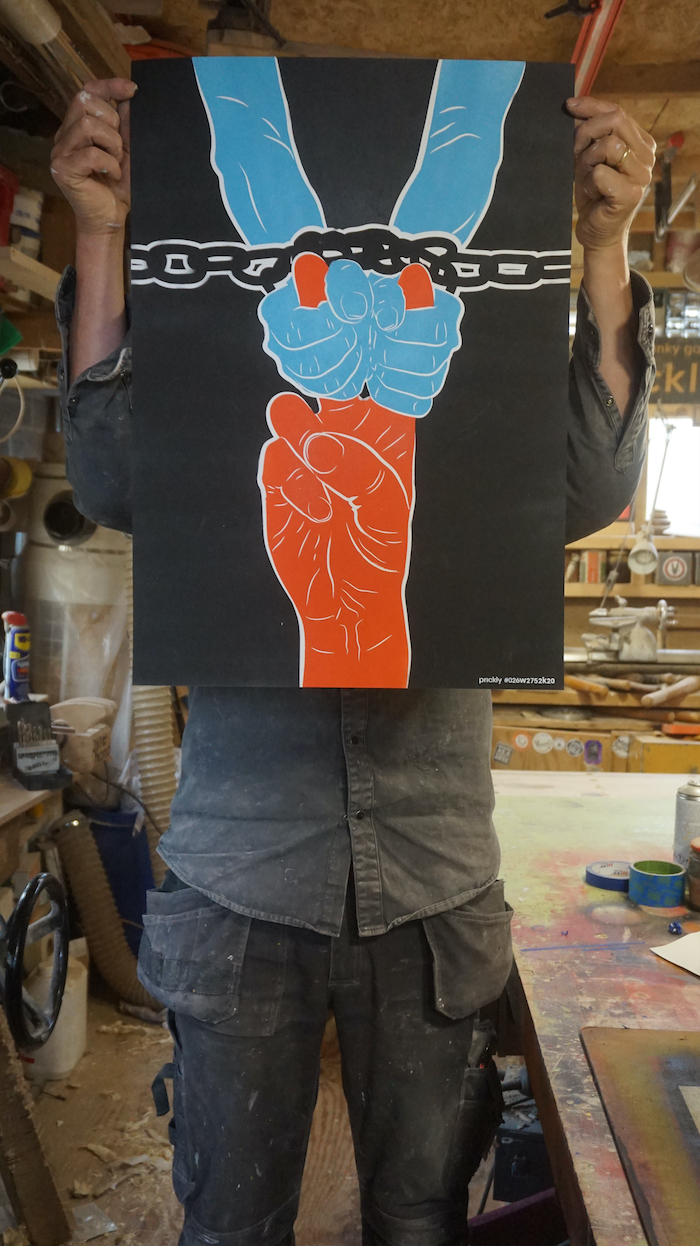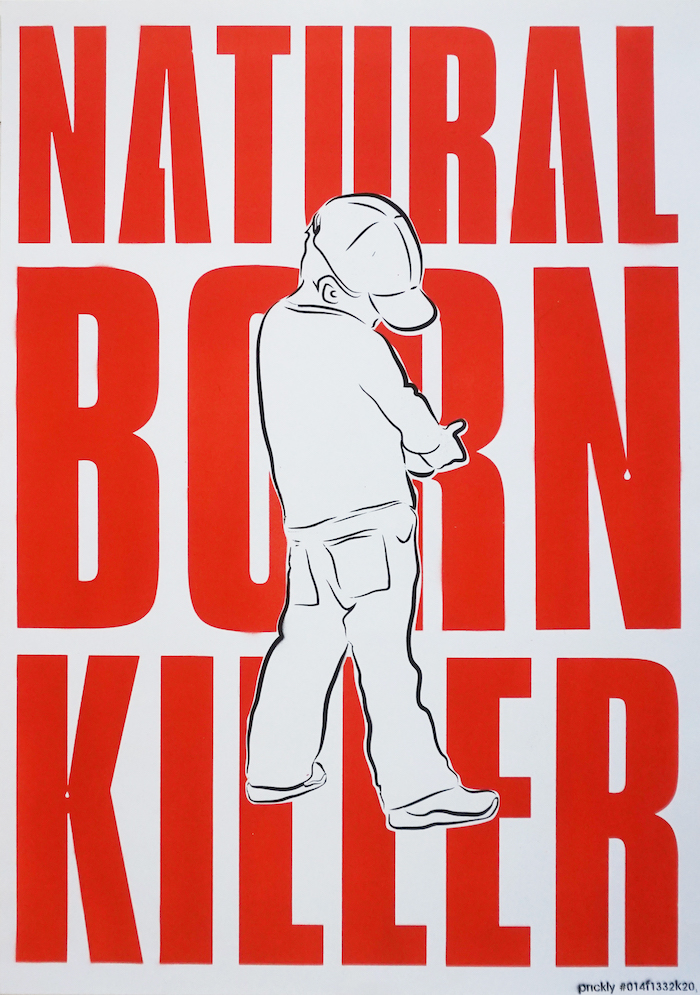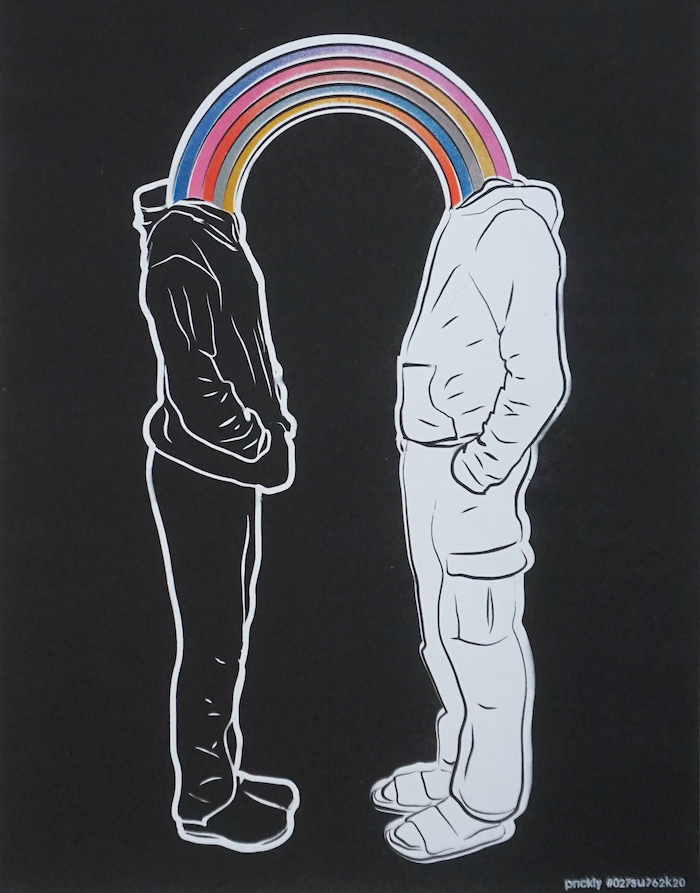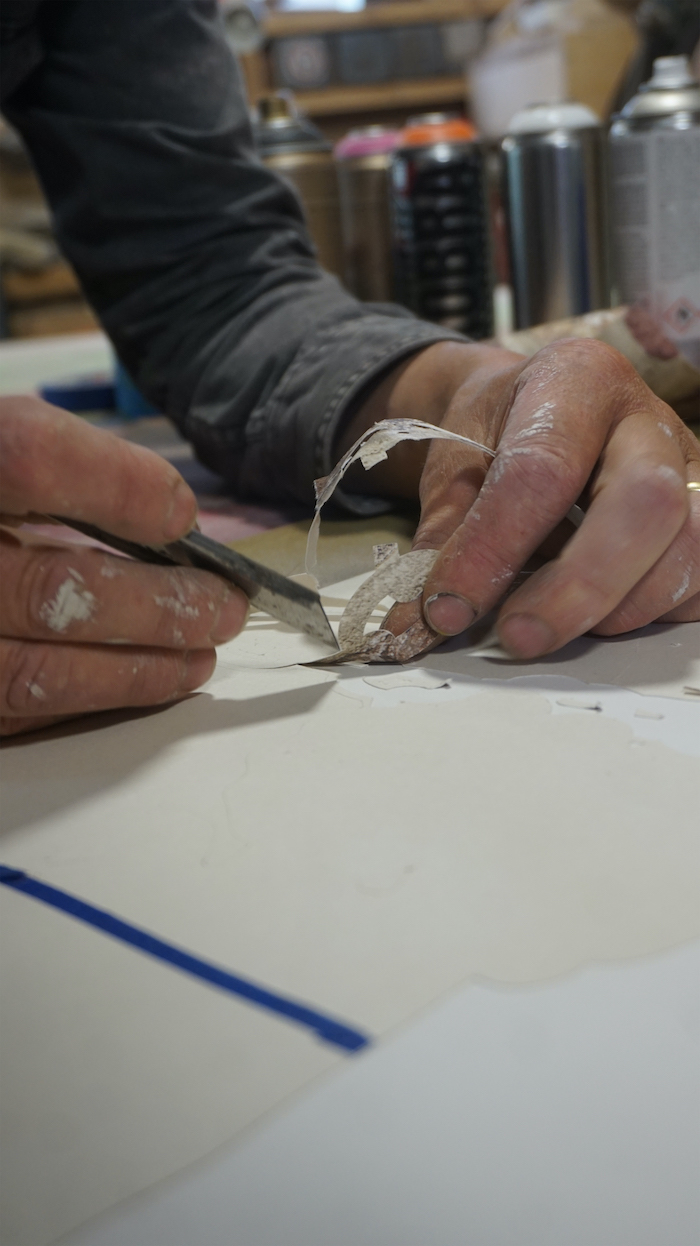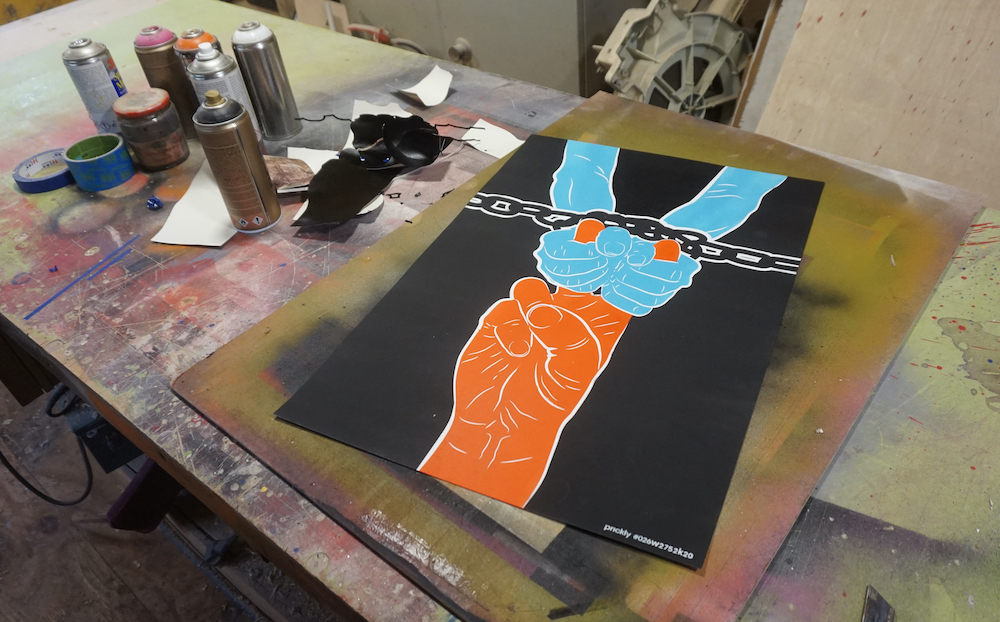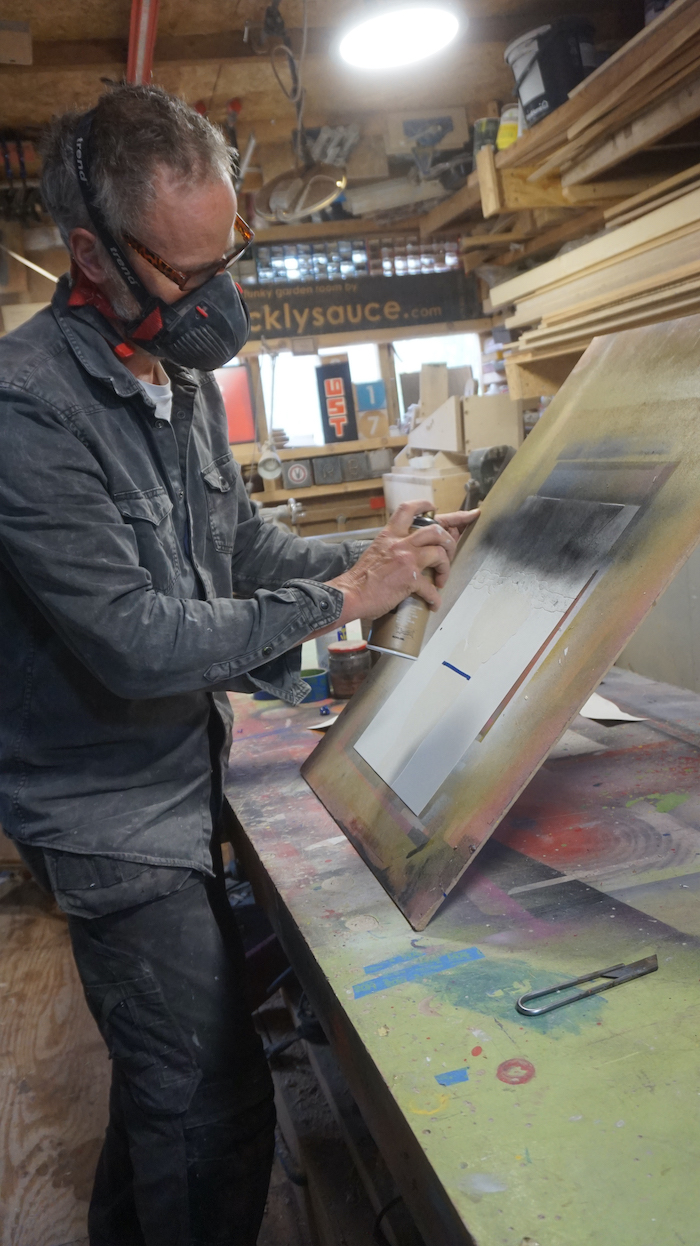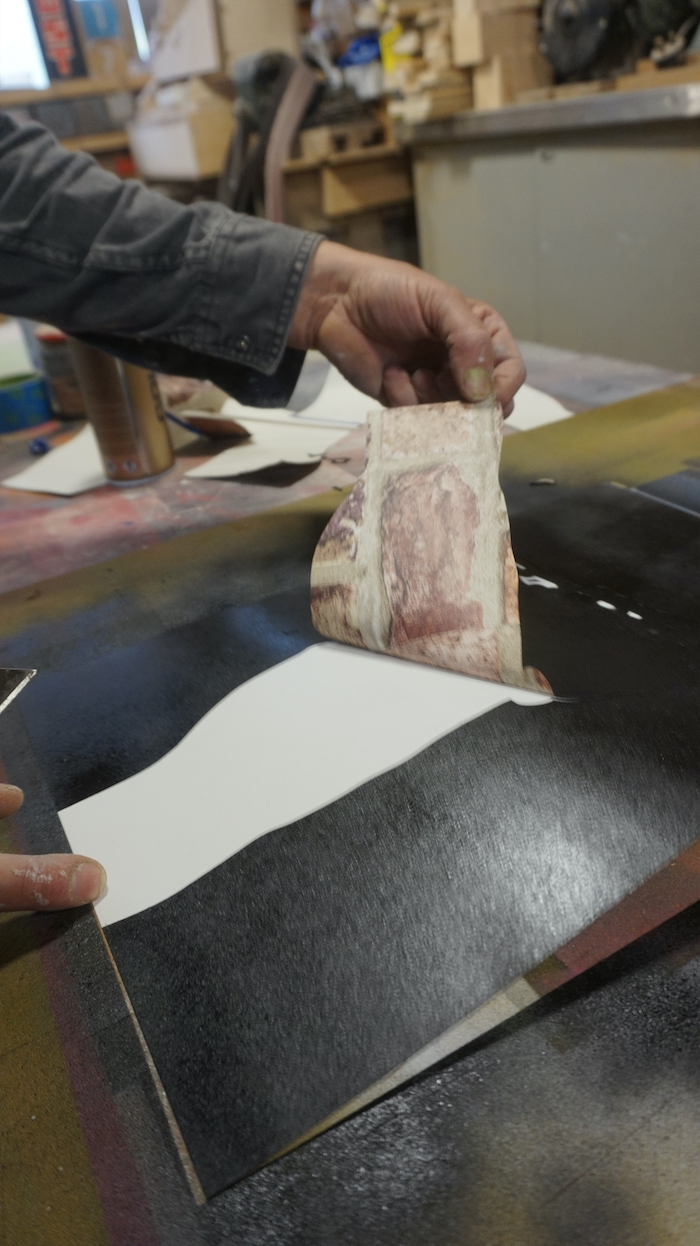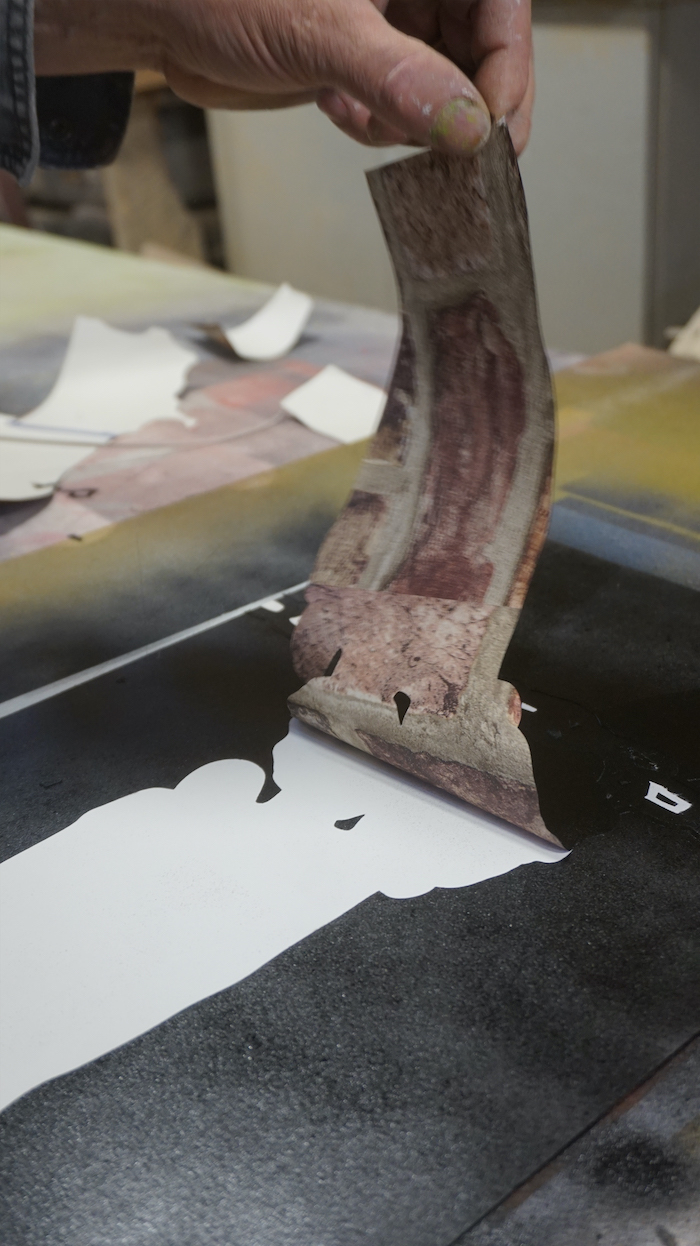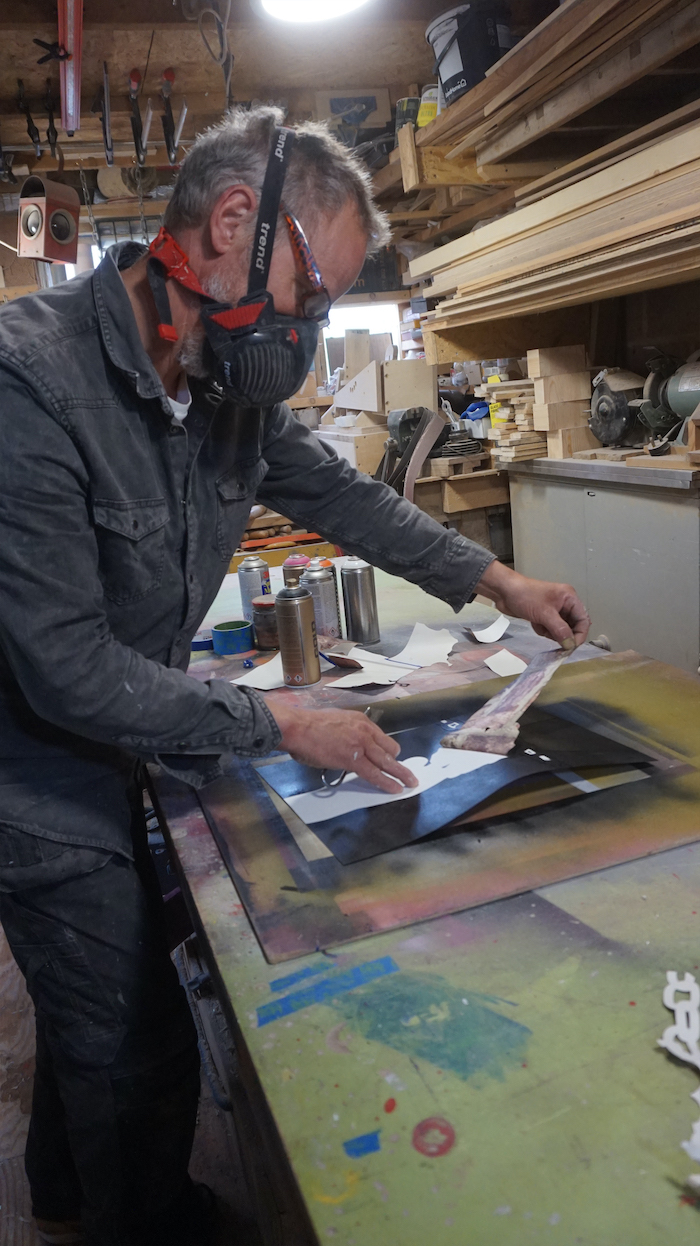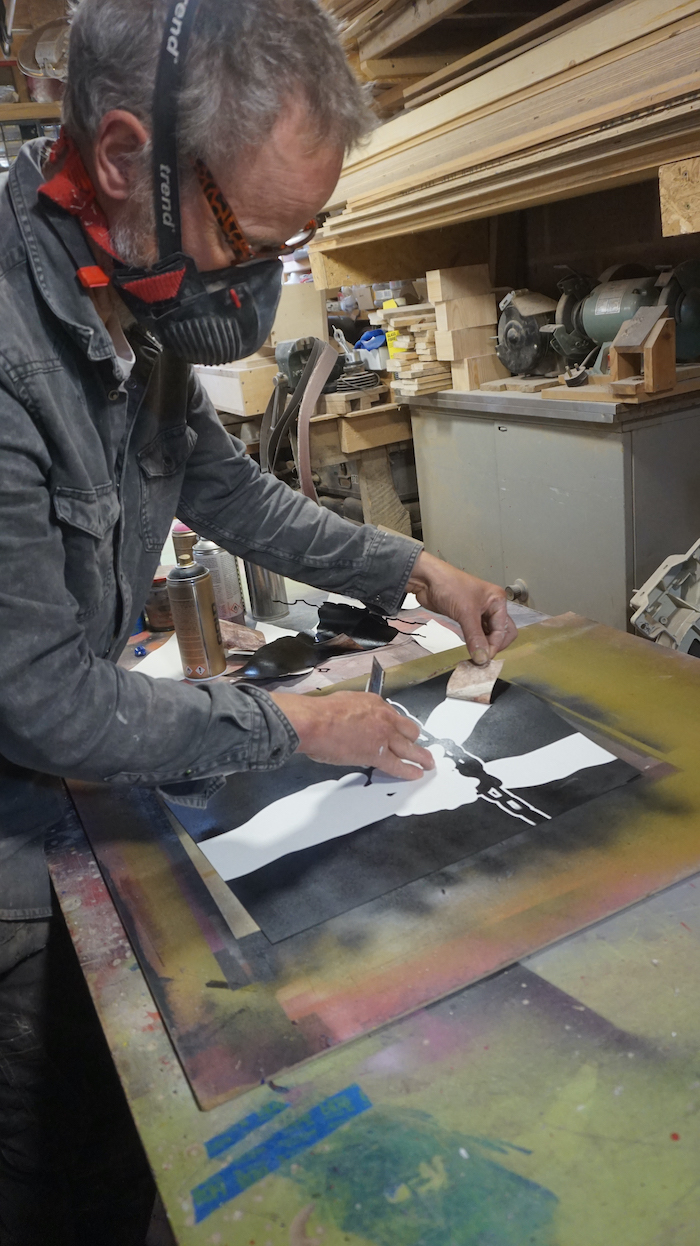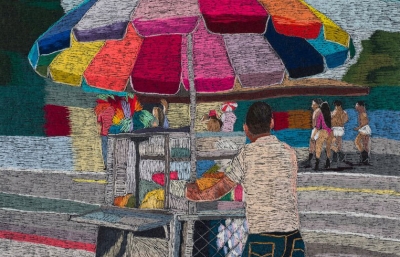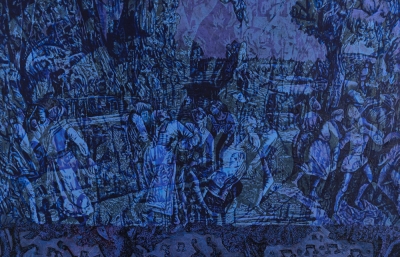Ready or not, 2020 has slammed the future before us, and it’s time to sink or swim. Climate change, transparent communications, accessible healthcare, and social justice reform have become shared global missions. In so many respects, educating the path to reform is a difficult task, but visual art expression can often convey urgency and connection where words cannot. In this critical moment to steady the global tipping point, a major pandemic has forced us to exchange ideas in the digital space instead of physical social collaboration.
This past spring, Lavazza launched TOward TOmorrow and a 2020 international contest with a project called, “TOward 2030, What are you doing?” Artists from around the world created artwork from a list of 17 global NGOs working under the United Nations’ 17 Sustainable Development Goals. With hundreds of entries from around the globe, the winner of the 2020 competition was UK-based, self-described “creative maker,” Pricklysauce, whose work embodied SDG 16—Peace Justice and Strong Institutions. We sat down with the artist after the announcement of his winning work, a potent poster image flashing colorful strength and the immediacy of classic graphic design. From a life in architecture, furniture design and his own poster-a-week project, the 50-year-old artist has had a lifetime working in the arts, and a breakthrough in his practice.
Evan Pricco: There are so many creative endeavors you’ve pursued: crafting furniture, working in an architecture firm, and now donning the encompassing title of “creative maker” as you work under the moniker, Pricklysauce. And since you mentioned being interested in street art, what struck you about it?
Pricklysauce: It's not just vandalism. It's cultural art, part of the urban makeup. It's actually an important part of society now. Because I studied architecture, as well, I've explored some of these things, maybe not directly with graffiti and street art in my own work, but in my third year, when writing my dissertation, there was another architect, a skateboarder and graffiti artist. And that was incredibly cool to have someone who started discussing architecture around those subjects. So I guess it's always fascinated me.
But also, like any creative, looking at something, you say, "What can this give me in a different way?" It's going to be public, but they're also taking that space and making it something else, making it their own, often bringing to it a social-political commentary, as well. There's actually a lot to it.
There was definitely a comparison to be made here within the competition, as well, but also there’s the reminder that a lot of major decisions in the world are made without our input. Public space is like this. And to find a way to make artwork that comments on these major decisions that affect our daily lives is powerful stuff. How do we make art part of people's lives? How do we allow visual art to communicate complicated things that words can’t seem to broach in such an emotional way? You did this so well.
It's difficult to say that I knew that in the moment. It felt like a very strong image. Studying architecture really taught me to be self-critical looking at my work. I can critique my own work well, so I know when I'm doing good work. But I had no way to base that against anything else. You see all the other amazing artwork that comes in. There’s absolutely incredible artistry going on.
Posters are a fantastic medium in that their very nature is transient. The way we experience posters is to imagine, for example, that a band is playing. You pass it on the street. You're going by very fast. A poster has to work in the fact that it's got to get its message out extremely fast. Bang! One message. Get it out. Which fits in with what I've been doing over the years where I do try and get things down to a very basic level. I wanted to create something that was going to be impactful.
Would you say that you are a politically active person? Art is political by nature, but to actually create a work that's built around a topic of politics or global change could be daunting.
Of course I have a worldview and political views, so that comes into it. We have a lot of discussions, particularly at home with my wife and kids. We speak on issues and the reasons why certain things happen or don’t.
The poster itself was... well, my phone chose to do this subject. I had it randomly select a number between 1—17, and it chose goal 16, “Peace, Justice and Strong Institutions.” I had no clue what I was going to do, but then the process came very fast. The only way I felt I could tackle it was literally to make graphic images of the words. So it was” peace,” your classic hippie peace sign. I love double-meanings, and here in the UK, this is the sign for victory, Churchill, after World War II. Not that the poster's necessarily supposed to be talking about that, but there's something within those double meanings where you can get through some of these design ideas. And then justice was this idea of your chained and bound hands. It was just that moment where I thought, "Could those two combine? Can those hands of Justice be holding onto Peace?" Because the other thing that got me, which probably brought me here, was, "Why were Peace, Justice, and Strong Institutions together as one goal?" And that intrigued me.
As a poster, it had to work in graphic form. I didn't want any text on there, this is a worldwide competition. I want it readable anywhere. This is very particularly about those words, peace and justice, and it could be anywhere throughout the world.
I want to talk about the poster-a-week project that you started this year. This a great goal and very pragmatic as a creative practice. What a year to do it! Did this idea spark because of shelter-in-place or is it just a personal goal you gave yourself?
I started at the end of last year, and it's a strange thing, because, like a lot of times, you make a conscious decision, "I'm going to do this thing." I heard a podcast by a young graphic designer where he'd made a digital poster every single day for a year and they were talking to him about that. That was hugely inspiring. But I didn't want to make it digital. I do use the computer to make the image initially, but to make the stencils is really important to me, to have this physical thing.
So, I felt I could achieve something every week. But it builds up; it's not a sudden thing. Even though I'm considering this process of doing a poster every week for a year, it's to give me the space and time to learn a new craft and a new way of expressing creative thought. It's not necessarily a new thing. I did printmaking for a couple of years way back, and I have done some stenciling on made objects. 
I can only assume that if you're a songwriter, you can say, "I'm going to write a song a week. 52 songs." You could just be on your acoustic guitar and write 52 songs. But I'm sure, by song 36, you're learning new things about yourself as a songwriter, or in your case, as you're going through, poster by poster, design by design, idea by idea. What are the things that you're starting to pick up and notice about yourself as a maker?
Just an hour ago, I was literally taking photos of all the posters I’ve done this year, because I'm going to change my website. And there is a change going through. I can see my images coming a lot stronger as time goes on. Especially when the pandemic happened, and lockdown, I just had to react. It was such a big thing. I didn't feel like I could just be doing a random thought of that week. I really had to react to the things that were changing, and everything was changing every single day. And the ideas poured out.
But the thing that doing this project has shown me was being able to react to these moments now. You get an ability to witness what's happening in the news or what's happening around us and react. I post them onto Instagram so they have a life of 24 hours when they're up there. But the ones around the pandemic were definitely resonating better with people, because they're probably seeing something they're personally undergoing in these images. And that was a real eye-opener. So a lot of my work since then has been based on more of that aspect of thinking, "What has happened this week? What do I want to talk about?" And that's something I never got from other creative endeavors I’ve done in my life. If you make a table, a table's a table. You can spray-stencil words on it, which I love to do, and it adds a different experience to a thing. At the end of the day, it's just a cool table. But with the posters, I can actually express thoughts and ideas which I wouldn't have been doing, as I did in the past. And now? It's fantastic.
TOward TOmorrow was directed by Charlotte Pyatt.

